
In Albania, World War II began with its invasion by Italy in April 1939. Fascist Italy set up Albania as its protectorate or puppet state. The resistance was largely carried out by Communist groups against the Italian and then German occupation in Albania. At first independent, the Communist groups united in the beginning of 1942, which ultimately led to the successful liberation of the country in 1944.
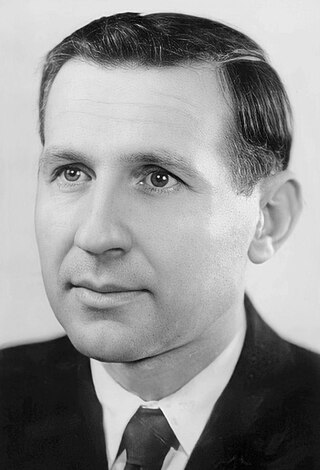
Mehmet Ismail Shehu was an Albanian communist politician who served as the 23rd Prime Minister of Albania from 1954 to 1981.
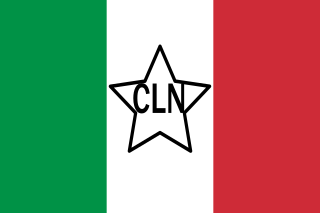
The Italian resistance movement is an umbrella term for the Italian resistance groups who fought the occupying forces of Nazi Germany and the fascist collaborationists of the Italian Social Republic during the Second World War in Italy from 1943 to 1945. As a diverse anti-fascist movement and organisation, the Resistenza opposed Nazi Germany, as well as Nazi Germany's Italian puppet state regime, the Italian Social Republic, which the Germans created following the Nazi German invasion and military occupation of Italy by the Wehrmacht and the Waffen-SS from 8 September 1943 until 25 April 1945.
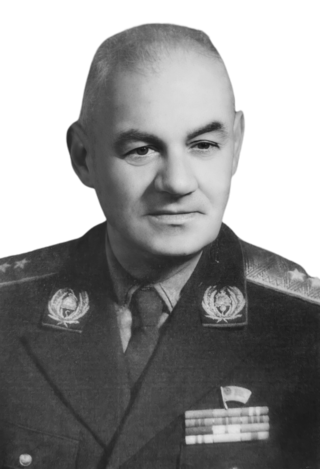
Spiro Theodori Moisiu, born as Spiro Koxhobashi, was the Major general of the Albanian National Liberation Army during World War II. He was the father of the former President of Albania, Alfred Moisiu.

World War II in Yugoslav Macedonia started with the Axis invasion of Yugoslavia in April 1941. Under the pressure of the Yugoslav Partisan movement, part of the Macedonian communists began in October 1941 a political and military campaign to resist the occupation of Vardar Macedonia. Officially, the area was called then Vardar Banovina, because the very name Macedonia was prohibited in the Kingdom of Yugoslavia. It was occupied mostly by Bulgarian, but also by German, Italian, and Albanian forces.
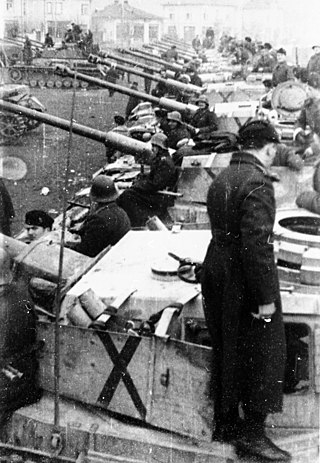
The Kosovo Operation was a series of military operations leading up to one final push during World War II, launched by the Bulgarian army with the assistance of Albanian and Yugoslav Partisans to expel German forces from Kosovo and prevent the retreat of German forces from Greece. German Army Group E was withdrawing through it from Greece towards Bosnia, since the escape route through Niš and Belgrade had been closed by the Yugoslav Partisan, Bulgarian and Soviet forces.

Ali Demi was an Albanian hero of World War II and a communist. He was killed in battle fighting German forces in Vlora, Albania in 1943.
The 4th "Ali Demi" Battalion was a battalion under the 15th Regiment of Greek People's Liberation Army, founded during the Second World War. It comprised both from Cham Albanians and Greeks, of the region of Epirus and was established in May 1944.
The Chameria battalion was a battalion of the National Anti-Fascist Liberation Army of Albania during the Second World War. It was formed from the organized resistance groups of Cham Albanians on 15 June 1943 and was renamed as the IV Chameria Group in October 1943, which ceased to exist after the Liberation of Albania. It included at the time of its creation more than 500 armed troops, the vast majority of whom were Albanians from the Greek part of Chameria region and the rest from the Albanian part, and about 40 members of the Greek minority in Albania.

The 151st Infantry Division "Perugia" was an infantry division of the Royal Italian Army during World War II. The Perugia was formed on 25 August 1941 and named for the city of Perugia. The Perugia was classified as an occupation infantry division, which meant that the division's artillery regiment consisted of two artillery groups instead of the three artillery groups of line infantry divisions and that the divisional mortar battalion was replaced by a divisional machine gun battalion.

The National Liberation Movement, also translated as National Liberation Front, was an Albanian communist resistance organization that fought in World War II. It was created on 16 September 1942, in a conference held in Pezë, a village near Tirana, and was led by Enver Hoxha. Apart from the figures which had the majority in the General Council it also included known nationalists like Myslim Peza. In May 1944, the Albanian National Liberation Front was transformed into the government of Albania and its leaders became government members, and in August 1945, it was replaced by the Democratic Front.
Terzilio Cardinali (1913–1944) was an Italian fighter known for his role in Albanian resistance.
First Partisan battalion Pino Budicin was a military unit of the” Vladimir Gortan” Brigade, 43rd Division of the 4th Army Corps of the Yugoslav National Liberation Army during World War II. The battalion was almost entirely made up of Italians, most of them from the former Italian region of Istria.

The Congress of Përmet, was a meeting of the Albanian communist leaders on May 24, 1944, in Përmet, Albania, which elected a Provisional Government. The congress was modeled after the Anti-Fascist Council for the National Liberation of Yugoslavia. 188 delegates attended the Congress. The majority of the delegates came from Southern and Central Albania: 25 from Korça, 48 from Vlora-Gjirokastra, 15 from Berat, 8 from Elbasan, 10 from Tirana, 3 from Peza, 2 from Durrës. Additionally, the congress was attended by delegates of the National Liberation Movement and the Brigades.
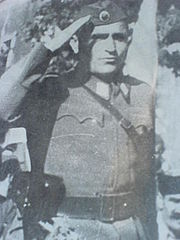
Vlado Šegrt was a Yugoslav participant in the National Liberation Struggle and a socio-political worker in the Socialist Republics of Bosnia and Herzegovina and Yugoslavia. He was a reserve Major General and national hero of Yugoslavia. From September 1948 to March 1953 he was the President of the Presidium of the National Assembly of the People's Republic of Bosnia and Herzegovina.

The Brigate Garibaldi or Garibaldi Brigades were partisan units aligned with the Italian Communist Party active in the armed resistance against both German and Italian fascist forces during World War II.

The 6th Proletarian Assault Lika Division "Nikola Tesla" was a Yugoslav Partisan division formed on 22 November 1942. It was formed from the 1st, 2nd, and 3rd Lika Brigades. On 11 November 1943, it became part of the 4th Corps and later a part of the 1st Corps. It operated in Dalmatia until November 1943 when it crossed into Bosnia, later it fought in Serbia and on the Syrmian Front. From October 1944, the 22nd Serbian Kosmaj Brigade also fought as part of the division, and in December 1944 an Artillery Brigade was formed within the division.

The 5th Krajina Division was a Yugoslav Partisan division formed in Glamočko polje on 9 November 1942.
The Battle of Përmet or Battle of Kuqarit was a battle of the Albanian Resistance of World War II against the Italian Fascists. The battle took place in 1943 near Kuqari.











